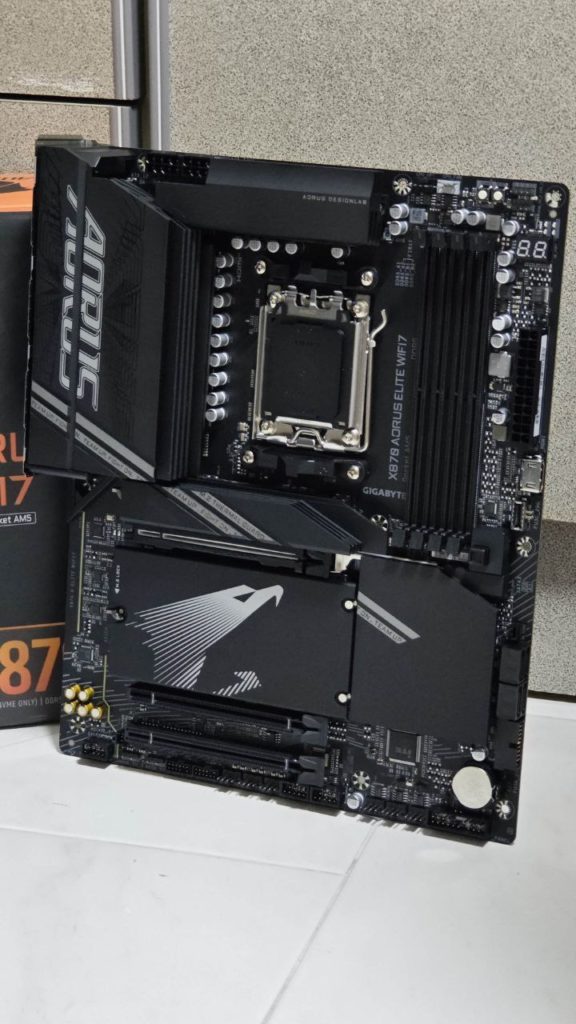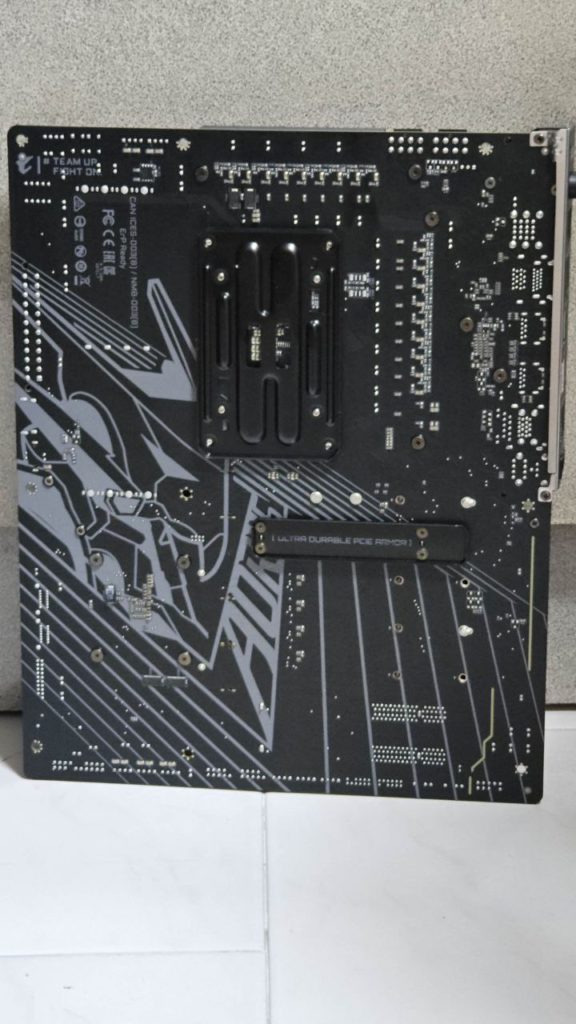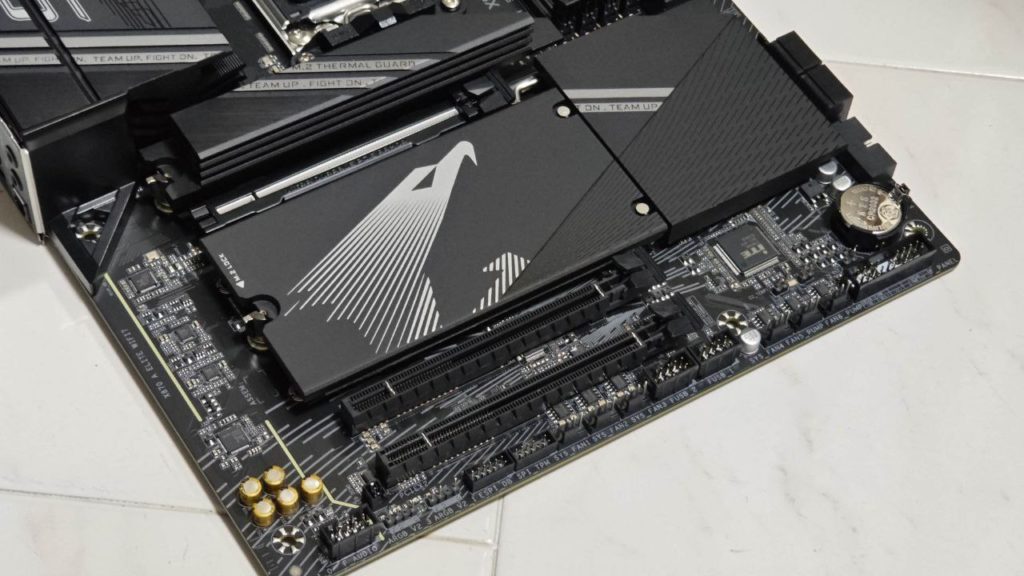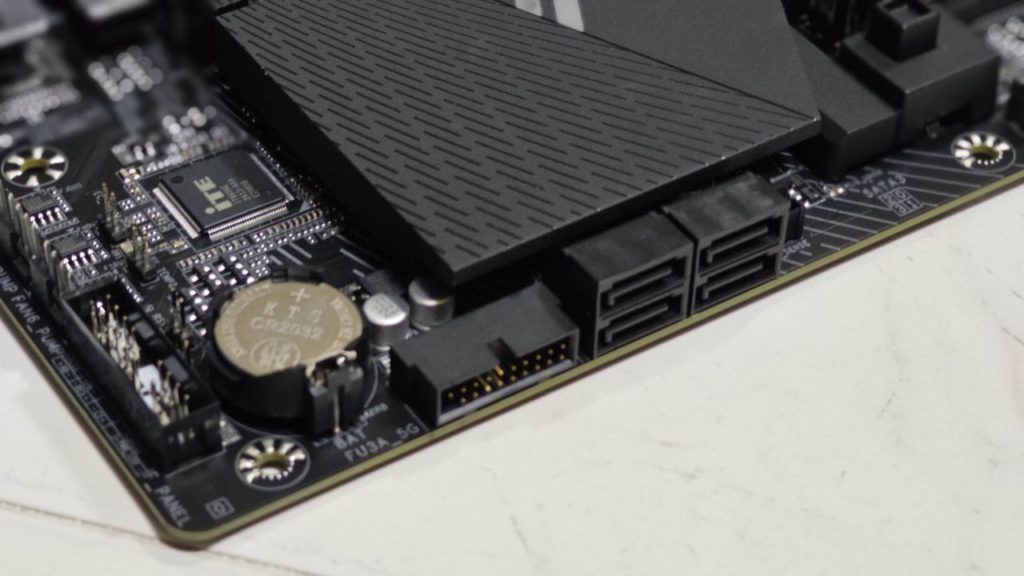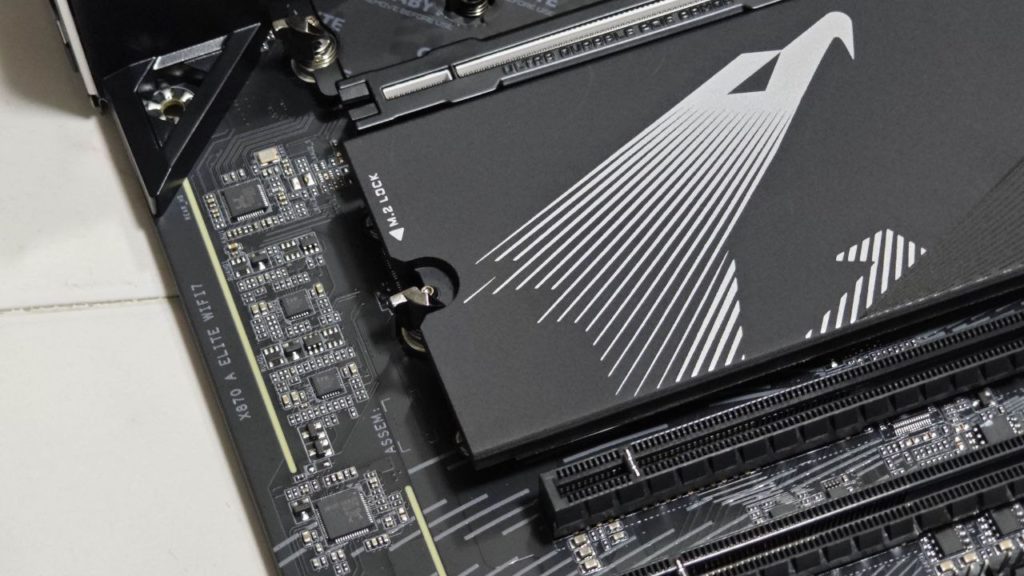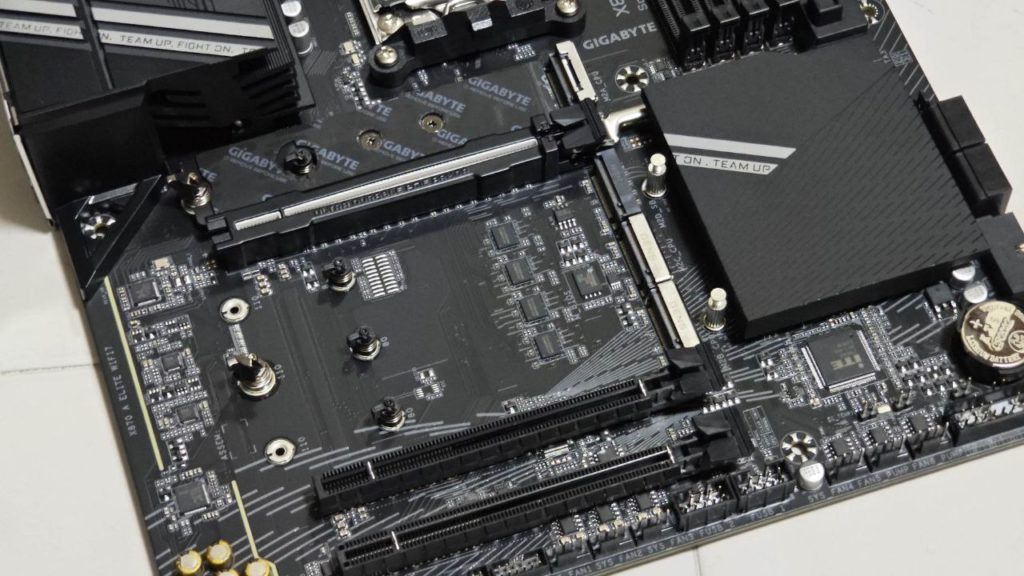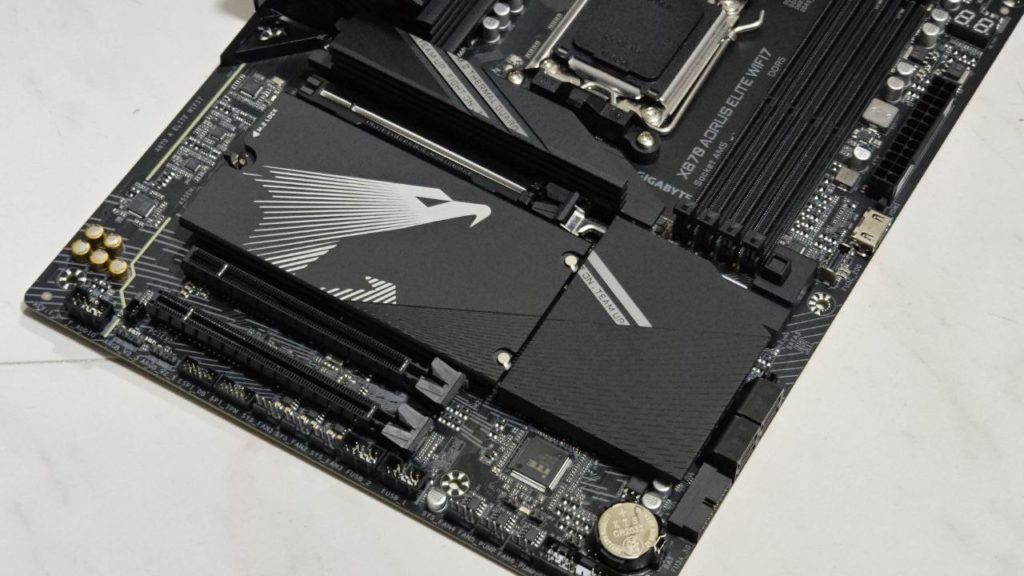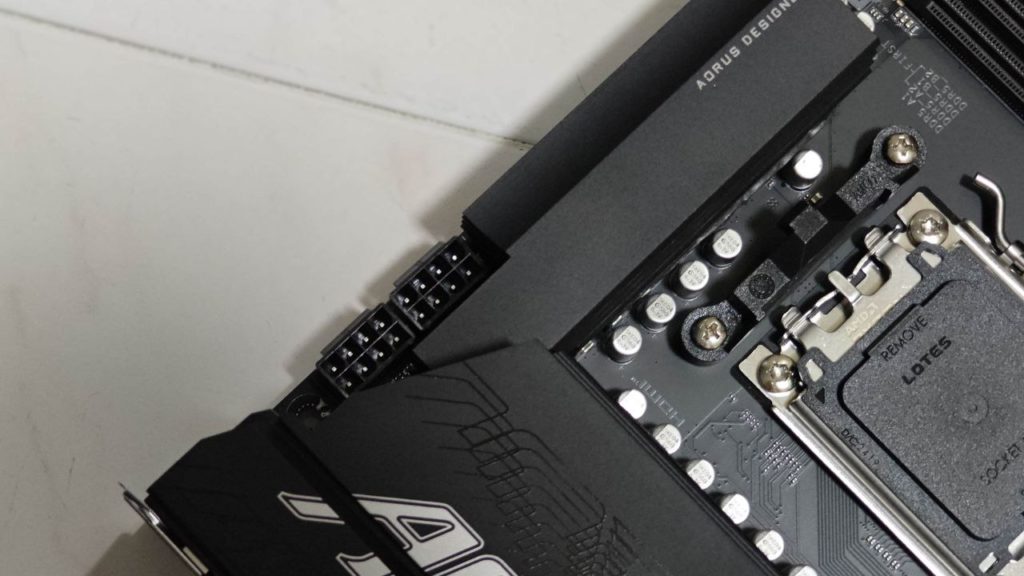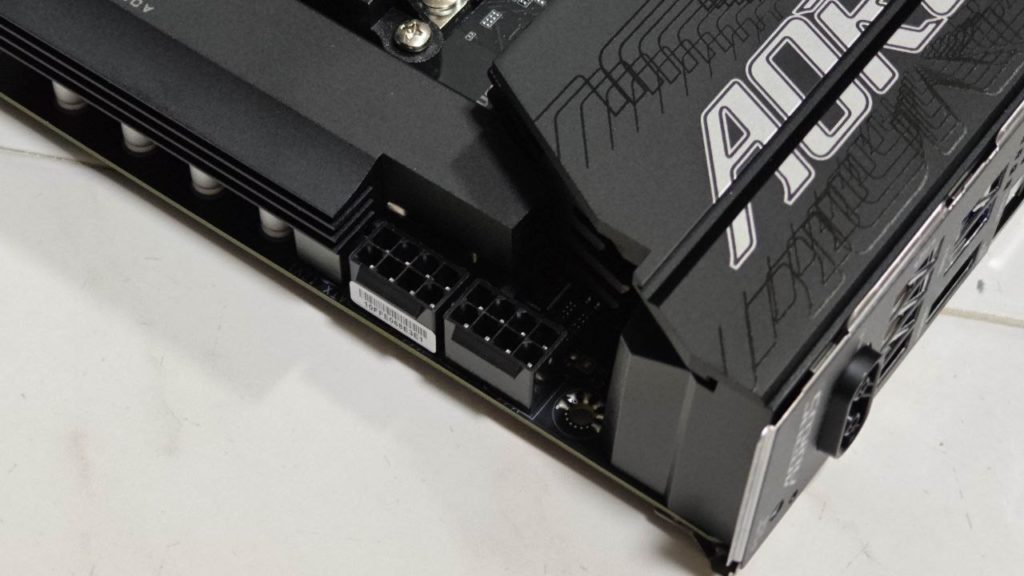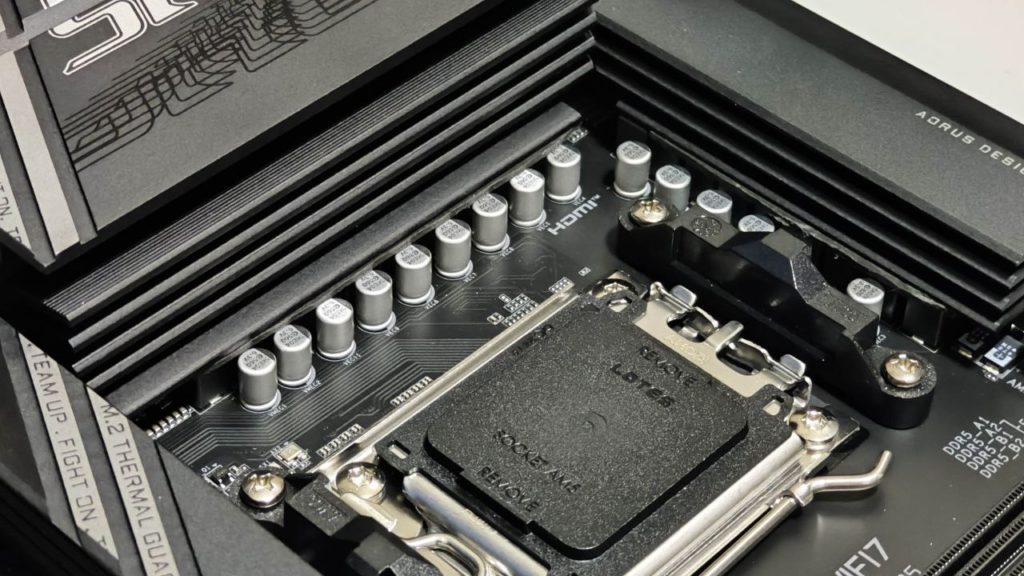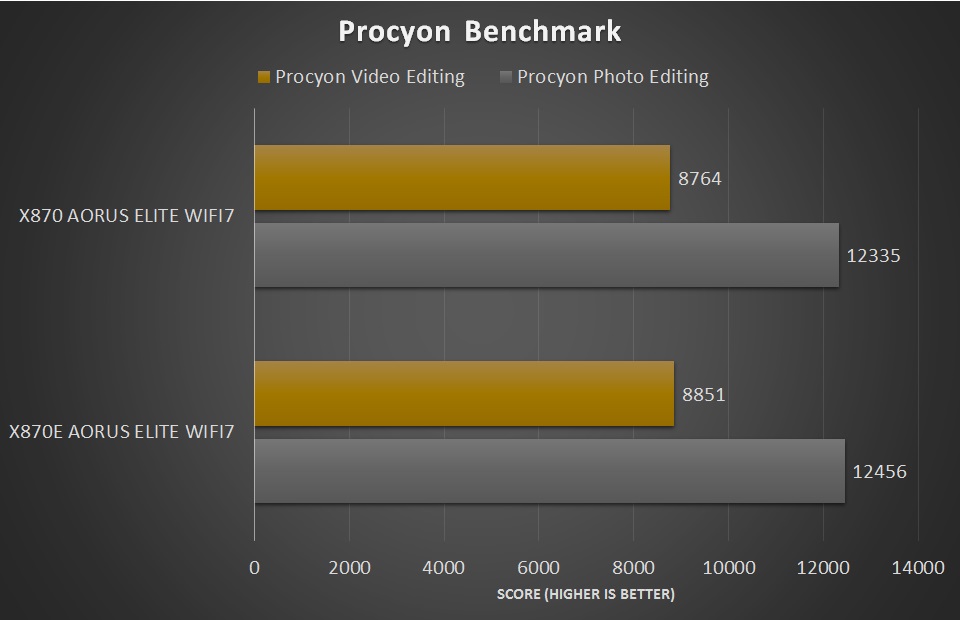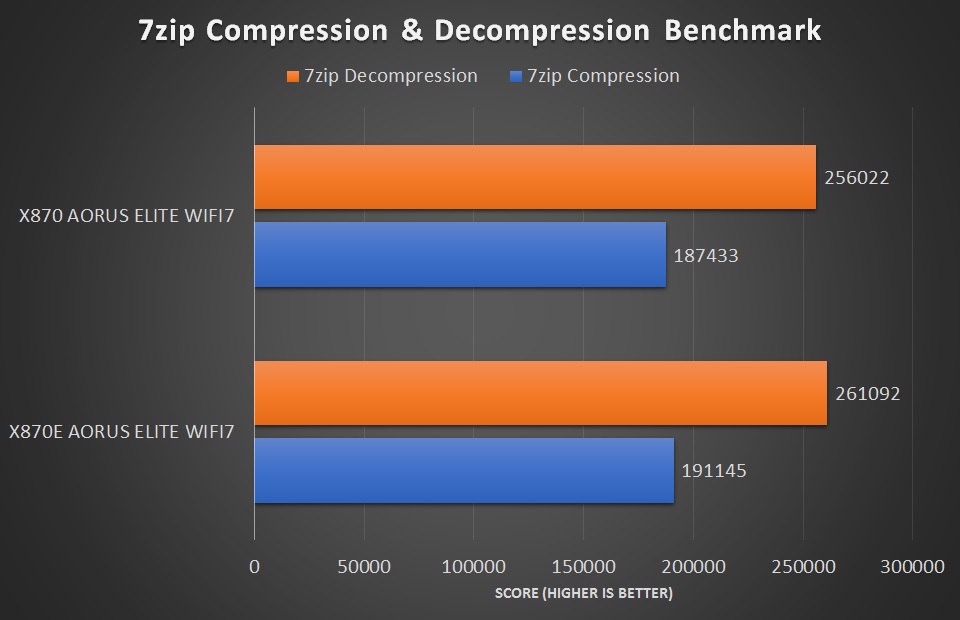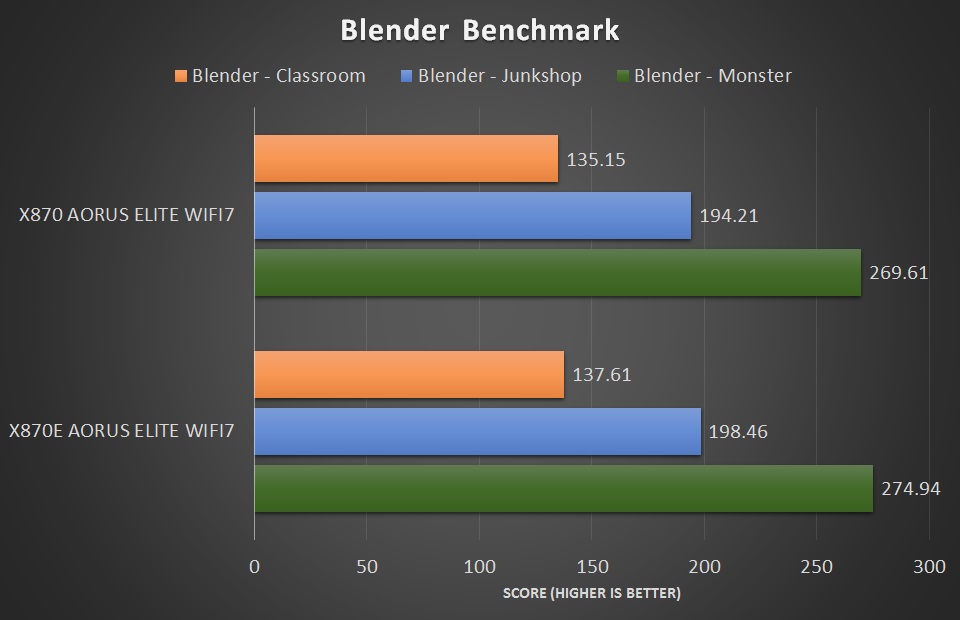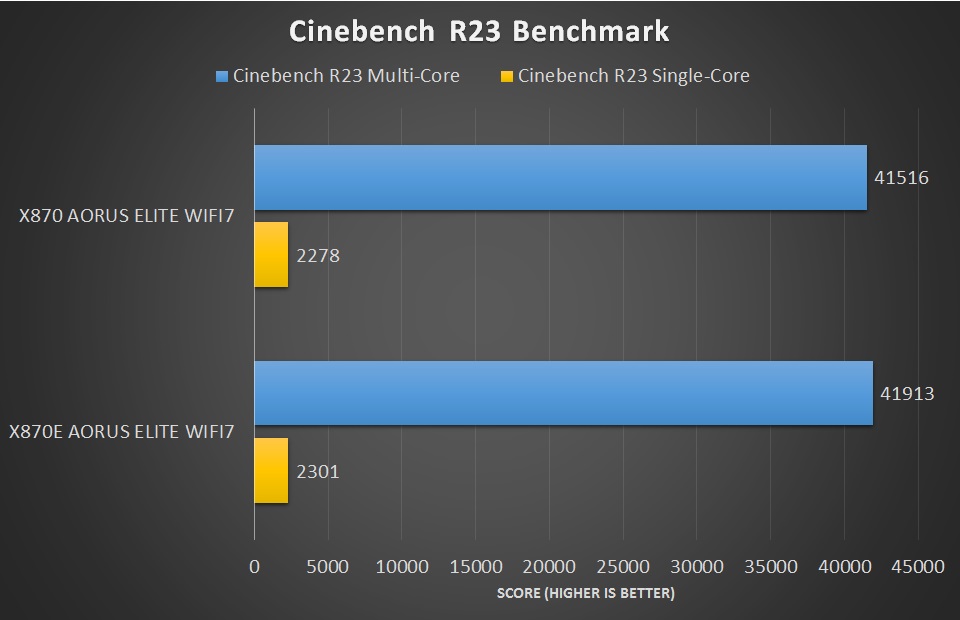AMD’s 800 series chipsets are built to handle the latest Ryzen 9000 processors, offering plenty of options depending on what you need. At the top, there’s the X870E chipset, packed with high-end features like PCIe 5.0 and DDR5 support for enthusiasts. If you’re after a good mix of performance and value, the X870 is a great choice, while the B850E and B840 are solid budget options that still get the job done.
This time, we’re checking out the Gigabyte X870 AORUS ELITE WIFI7 to see how it compares to the X870E version. We’ll dive into how it performs in everyday tasks and real-world scenarios to figure out which one might be a better fit for your setup.
Gigabyte X870 AORUS ELITE WIFI7
The X870 AORUS ELITE WIFI7 might have a simpler design compared to its X870E counterpart, but when you take a closer look at the layout, the similarities are quite striking. On the spec sheet, the X870 AORUS ELITE WIFI7 comes across as a notable step up from the X670 or even some premium B650E boards.
It includes enhancements like additional USB4 ports, PCIe 5.0 support, and other upgrades aimed at improving convenience for users. These features make it a compelling choice for those looking for modern connectivity and performance in a well-rounded package.
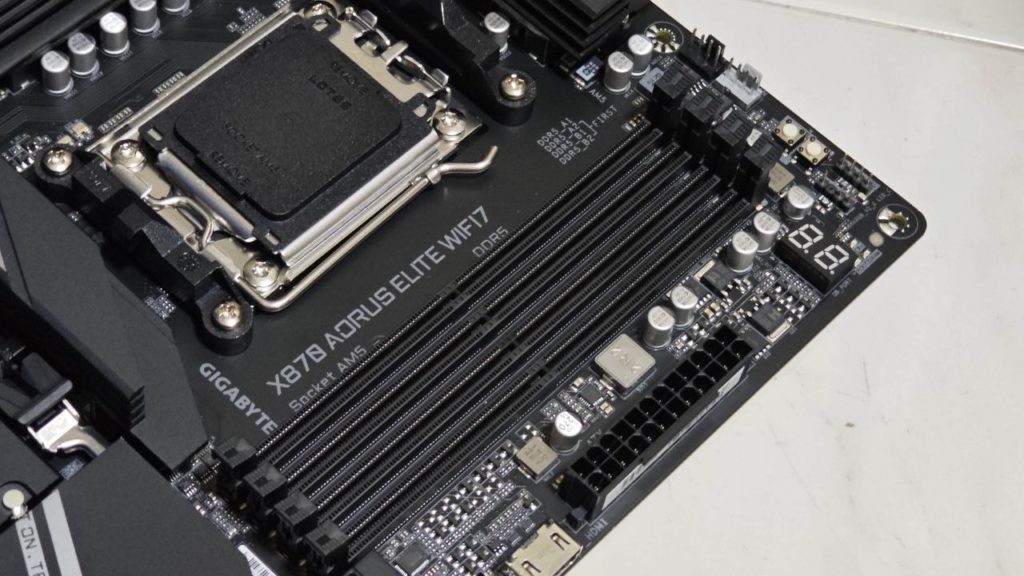
The X870 AORUS ELITE WIFI7 supports DDR5 memory, making it an excellent choice for users who prioritize high performance. Depending on the memory kit and system tuning, it accommodates overclocked frequencies of up to 8200 MHz.
With four DIMM slots, the motherboard can handle up to 256GB of RAM, making it ideal for power users and professionals working with memory-intensive applications such as video editing, 3D rendering, and virtual machines. These capabilities ensure the board is well-suited for both high-end gaming and demanding productivity tasks.
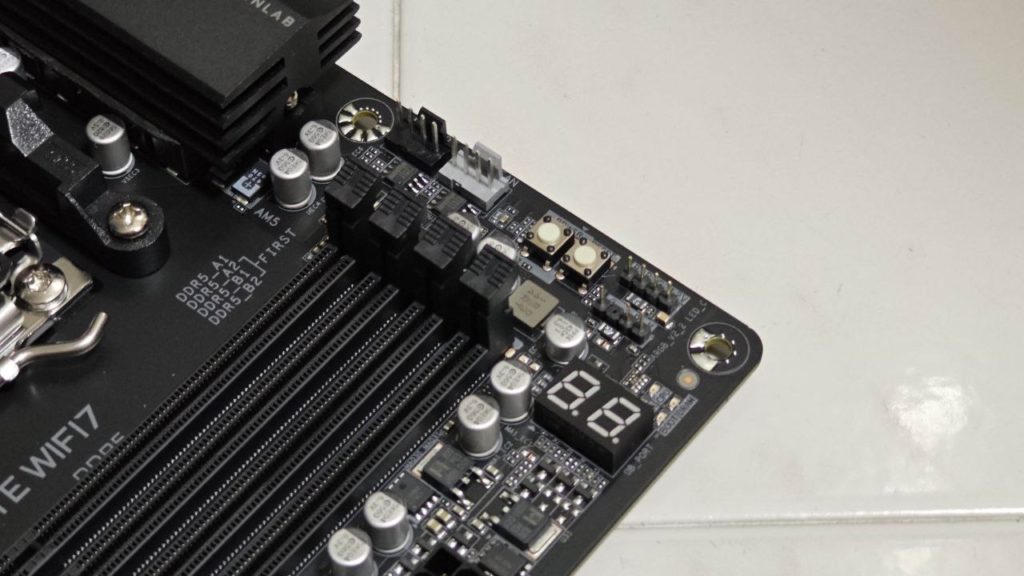
Alongside the Diagnostic LED, the motherboard now features a Q-Code debug LED—an addition missing from previous generations—allowing for much easier troubleshooting during setup or system issues.
Another practical upgrade is the inclusion of a power and reset switch, conveniently positioned above the DIMM slots. This feature streamlines system testing and adjustments, making it especially handy for builders frequently tweaking their configurations. These enhancements reflect Gigabyte’s commitment to improving user experience across their motherboard lineup.
The X870 AORUS ELITE WIFI7 motherboard introduces user-friendly features aimed at simplifying PC building and maintenance. Its SSD heatsinks now feature a click-lock latch design, making M.2 drive installations quick and tool-free. Complementing this is the M.2 EZ-Latch, which eliminates the hassle of securing or replacing SSDs, ensuring a smoother experience for users.
Each M.2 slot is labeled for easy identification, further enhancing convenience. Additionally, the integration of a PCIe EZ-Latch—previously exclusive to higher-end models—enables effortless GPU removal with a simple latch release mechanism. These updates underline Gigabyte’s commitment to improving accessibility and usability across its AORUS motherboard lineup, catering to beginners and experienced PC builders alike.
The VRM design of the X870 AORUS ELITE WIFI7 is engineered for stability and efficiency, featuring a 16+2+2 phase configuration with 60A power stages, mirroring its X870E counterpart.
The setup dedicates 16 phases to the CPU VCore in an 8+8 parallel arrangement, while the remaining 2+2 phases handle the memory and SoC. This design ensures a reliable and consistent power supply, enabling the motherboard to deliver optimal performance, even during demanding workloads or intensive system use. This robust configuration makes it a solid choice for high-performance computing and multitasking environments.
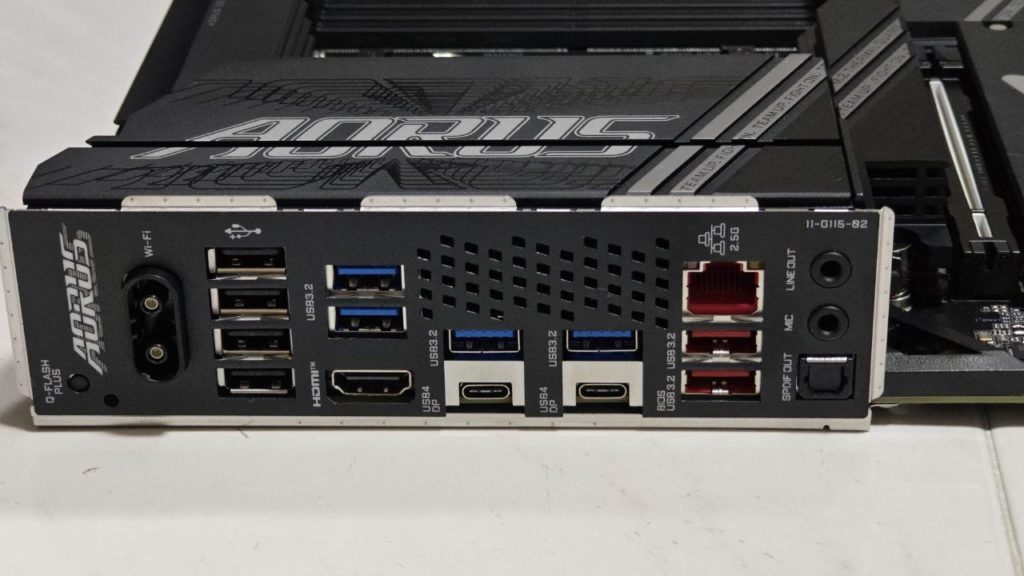
The layout of the X870 AORUS ELITE WIFI7 differs slightly from the X870E variant, but it maintains the same array of connectors and ports. It offers reliable connectivity with 2.5G Ethernet and WiFi 7, ensuring fast and stable network performance. For swift data transfers, users can utilize USB 3.2 Gen 2×2 Type-C ports, while audio enthusiasts will appreciate the inclusion of the Realtek ALC1220 codec, delivering crisp, high-quality sound along with an optical audio port for enhanced configurations.
Practical features like BIOS Flashback simplify firmware updates, allowing updates without needing a CPU or RAM installed, and the Clear CMOS button makes resetting system settings effortless. Together, these features cater to both novice and advanced users, further enhancing the board’s usability and versatility.
Test Setup and Performance
| Specs | Main System |
| CPU | AMD Ryzen 9 9950X |
| RAM | G.Skill Trident Z5 Neo 6000MHz CL28 |
| Main Storage | Samsung 990 Pro 1TB |
| GPU | ASUS ROG GeForce RTX 3080 10G |
| Motherboard | Gigabyte X870 AORUS ELITE WIFI7 | Gigabyte X870E AORUS ELITE WIFI7 |
| CPU Cooler | Cooler Master MasterLiquid 360 ION |
| PSU | Cooler Master V1200 |
| OS | Windows 11 64 bit |
We compared the performance of the X870E AORUS ELITE WIFI7 and X870 AORUS ELITE WIFI7 using an identical setup to determine whether the differences in performance were significant. This involved analyzing key metrics under real-world workloads, including multitasking and system stress tests to assess how the motherboards handle various tasks and whether the X870E justifies its higher price compared to its slightly simplified counterpart.
Using the same components for testing, the X870E AORUS ELITE WIFI7 demonstrates a noticeable edge over the X870 AORUS ELITE WIFI7, highlighting the advantages of the enhanced chipset. This performance difference, while not dramatic, reflects the X870E’s ability to better handle intensive workloads and maximize hardware potential, making it a preferable choice for users seeking peak efficiency in demanding scenarios.
VRM Temperature
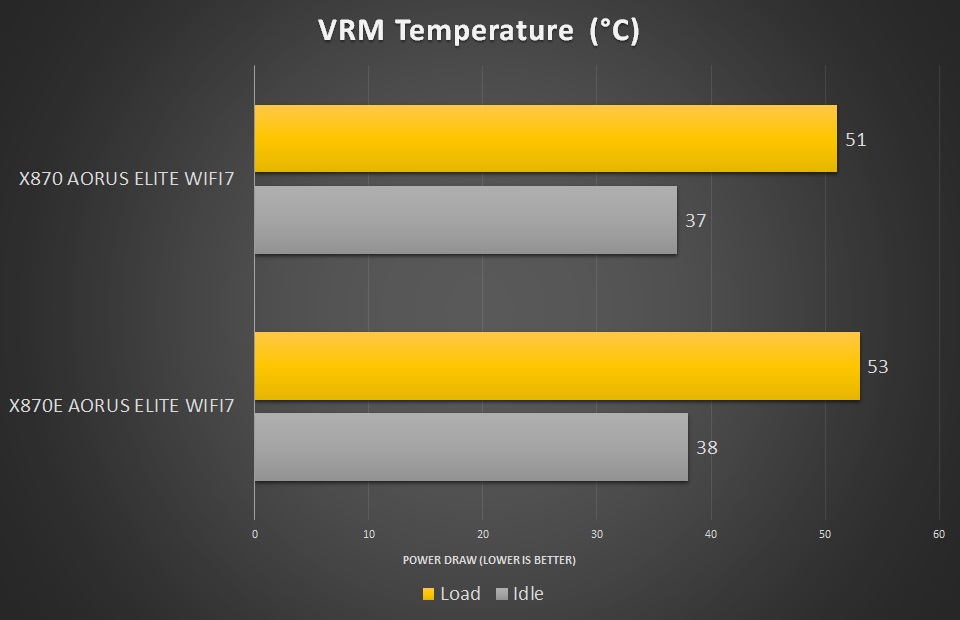
During our tests, we monitored the motherboard VRM’s idle and load temperatures. While the X870E chipset board delivered better performance, its load temperatures were slightly higher compared to the X870. However, the increase was minimal and remained well within acceptable levels, showcasing efficient thermal management despite the chipset’s higher performance potential.
Conclusion
The X870 AORUS ELITE WIFI7 is a thoughtfully designed motherboard that combines reliable performance with forward-thinking technology. With notable upgrades like USB4 and WiFi 7 while maintaining essential features such as PCIe 5.0 and DDR5 memory support, these improvements make it an appealing choice for gamers and content creators looking to adopt the latest tech standards. However, the practical benefits of USB4 and WiFi 7 might be limited for now, as the ecosystems for these technologies are still developing, and compatible hardware, like WiFi 7 routers, remains expensive.
In terms of power delivery and thermal design, the X870 AORUS ELITE WIFI7 upholds the solid performance expected from the AORUS lineup. It is well-equipped to handle intensive workflows and supports AMD’s Zen 4 and Zen 5 processors effectively. Priced at $289.99, it offers a competitive package, but it faces stiff competition from its sibling, the X870E AORUS ELITE WIFI7, priced slightly higher at $319.99.
The X870E justifies its marginally higher cost by offering additional features and slightly better performance, making it a more compelling option for those seeking maximum value. While the X870 AORUS ELITE WIFI7 is a solid motherboard in its own right, its position as an upgrade path may be overshadowed by the better value provided by the X870E.




